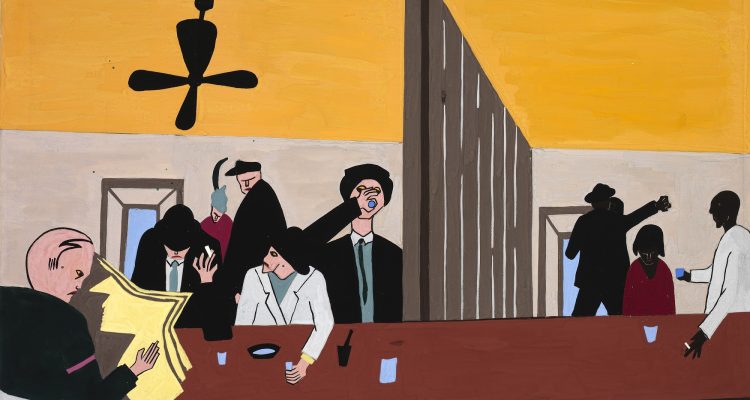In the summer of 1941, the accomplished African American artist Jacob Lawrence traveled to New Orleans. Though this was his first time visiting the South, he had spent his career completing more than 60 panels depicting the migration of Black Americans to the industrial North. In his work “Bar and Grill,” which now hangs in the Smithsonian American Art Museum, Lawrence sheds light on the ‘40s southern Black experience, portraying a different world compared to the Harlem he came from.
In this painting, a bar is divided by a wall from floor to ceiling. On one side of the divided room is a group of white patrons, while on the right is a smaller group of Black patrons. Behind each group are two doors on either side of the wall, clearly indicating two different entrances. On the surface, this is a scene of segregation in Jim Crow-era Louisiana, but looking closer, the piece seems to speak to the larger effects segregation had on the culture of the South. Although “separate but equal” was the law of the land after the Supreme Court’s decision in Plessy v. Ferguson (1896), Lawrence’s account of this ordinary bar and grill in the deep South exposed the reality of the system for those impacted by it.
Lawrence depicts the reality clearly in his work by portraying not just the segregation, but the inequality that persisted. On the white side of the bar, a ceiling fan cools the patrons and the barman stands ready to serve them first. Even the differing doorway heights on each side indicate the clear inequalities. Yet, despite the poor accommodations given to the Black patrons, they look more lively than their white counterparts. A couple can be seen dancing at the rear; another pair leisurely drinking at the front. In comparison, the white patrons look angry and unhappy. There are sharp looks, downing of drinks and a general unpleasantness on their side.
It seems that Lawrence is trying to show that although southern Blacks were mistreated for the mere color of their skin, they carried on with their lives, refusing to let racism suppress them. All the while, the very people responsible for this intolerant policy are those unable to live without tension and unhappiness.
Though the Jim Crow laws ended around 50 years ago, the centuries of legal segregation left a mark on the nation’s fabric, creating a system of inequalities for people of color to navigate. Numerous metrics indicate that Black Americans are more likely to live in poverty and die in childbirth, and are less likely to be employed or graduate high school. As has been brought to the front of public discourse every few months for a decade, we also know that Black Americans are twice as likely to be killed by police, and often for disproportionate offenses. Not to mention the violent threats and insults that Black Americans constantly face that white Americans have never experienced.
Segregation is over. There are no longer white sides of the bar and “colored” sides. But, notwithstanding this progression, inequality is still pervasive within our society, and it requires every ally to not only recognize our past, but push for a more equal future. This Black History Month, cherish the culture of Black Americans and appreciate the invaluable contributions they have made to our country, but also remember the injustices they have suffered, and acknowledge the world that they live in today.
While we have truly come a long way, we have much further to go.


Leave a Reply